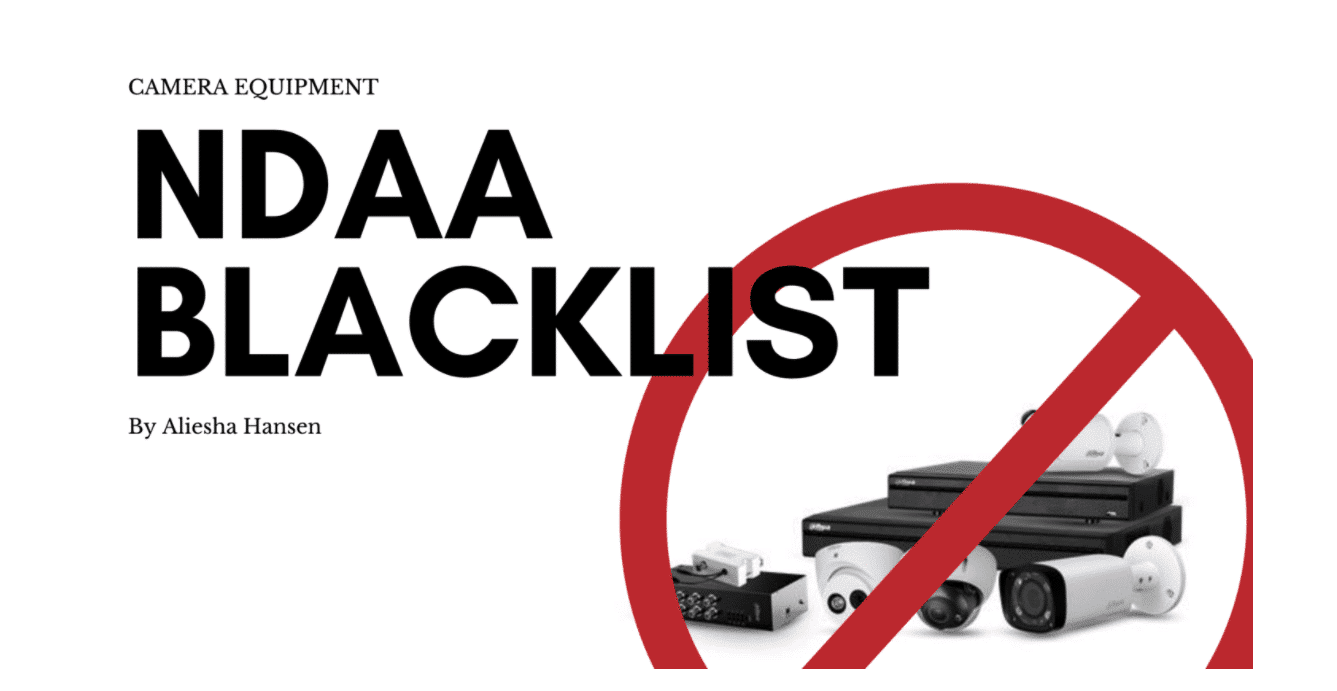NDAA Blacklist: What you need to know

Several camera companies have recently been in the news due to the NDAA blacklist. This post summarizes the law and why it’s relevant for many customers.
What is the NDAA?
The NDAA is the National Defense Authorization Act. The John S. McCain National Defense Authorization Act (NDAA) for Fiscal Year 2019 was signed into law on August 13, 2018. The law, specifically section 889, prohibits federal agencies, their contractors, and grant or loan recipients from purchasing or using “telecommunications and video surveillance equipment or services” from specific companies as a “substantial or essential component of any system, or as critical technology as part of any system.” The NDAA ban includes telecommunications equipment produced by Huawei Technologies Company or ZTE Corporation and video surveillance cameras or components produced by Hytera Communications Corporation, Hangzhou Hikvision Digital Technology Company, or Dahua Technology Company.
While some may assume that the ban applies only to gear manufactured in China, this is not the case. Section 889 of the NDAA does not specify the country of origin of the banned tech; rather, it calls out specific vendors, cameras, and components.
“While the ban is unprecedented in US history, China has effectively blocked foreign video surveillance for years as a ‘security risk.’”
On August 13, 2020…
On August 13, 2020, The White House announced that it is expanding the NDAA to blacklist anyone who “uses” banned Hikvision/Dahua/Huawei HiSilicon equipment from participating in any federally-funded contracts, regardless of whether the contract involves banned equipment or the entity spending the federal funds. “While the ban is unprecedented in US industry, China has effectively blocked foreign video surveillance for years as a ‘security risk,’ “cites John Honovich of IPVM.
“These are inexpensive products, which is why they’re usually purchased…”
John Matherly, the founder of the internet device scanning service Shodan, was commissioned by Forbes in August 2019 to research the proliferation of Hikvision and Dahua devices across America. He’s quoted as saying, “These are inexpensive products, which is why they’re usually purchased, and the underlying software and hardware between Chinese vendors is very similar or sometimes even identical. Organizations might not realize who originally wrote the software and designed the hardware for the device they purchased.”
Why our customers need to know
All projects relying on federal funds (including loans and grants) are now subject to NDAA compliance. If you intend to purchase NDAA-compliant equipment, notify the vendor of your requirement. Proposals should list specific equipment included in the system. Some company websites may have a statement such as, “[Company] does not have manufacturing relationships with the vendors named in the NDAA.” Others may provide separate lists of equipment that is compliant or non-compliant.
For example, here is Viper’s NDAA Compliance statement:
“Viper is pleased to confirm that our entire product portfolio is compliant as we do not source materials or components from companies named in the NDAA blacklist.”
There are concerns about OEMs (original equipment manufacturers) relabeling or rebranding banned equipment with their brand. So, be sure to vet your chosen vendor thoroughly.
If you have any questions about Viper’s compliance or that of our suppliers, don’t hesitate to contact us!
Sources:
-
Congress.gov: John S. McCain National Defense Authorization Act
-
IPVM.com: Foreign Video Surveillance Is Security Risk
-
Forbes.com: Thousands Of Banned Chinese Surveillance Cameras Are Watching Over America
-
IPVM.com: White House Expands Dahua Hikvision Blacklist To Federal Funding
